11 ways to increase your average speed: training tips and instant gains
When looked at over a period of months, your average speed can tell you a great deal about how you’re improving as a cyclist. Here’s some top tips to increase yours
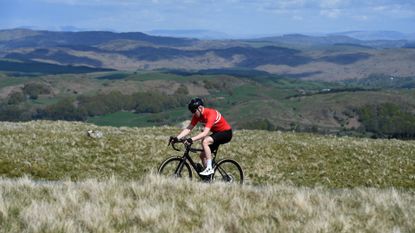
- What speed does the average road cyclist ride at?
- 1. Bend and tuck elbows
- 2. Pump up (or deflate) your tires
- 3. Brake less
- 4. Ride on the drops
- 5. Track stand
- 6. Ride out into a headwind and home in a tailwind
- 7. Cut excess fat
- 8. Add intervals into your training
- 9. Ride with others
- 10. Aero bike and/or wheels
- 11. Wear tighter clothing
- Does your average speed really matter?
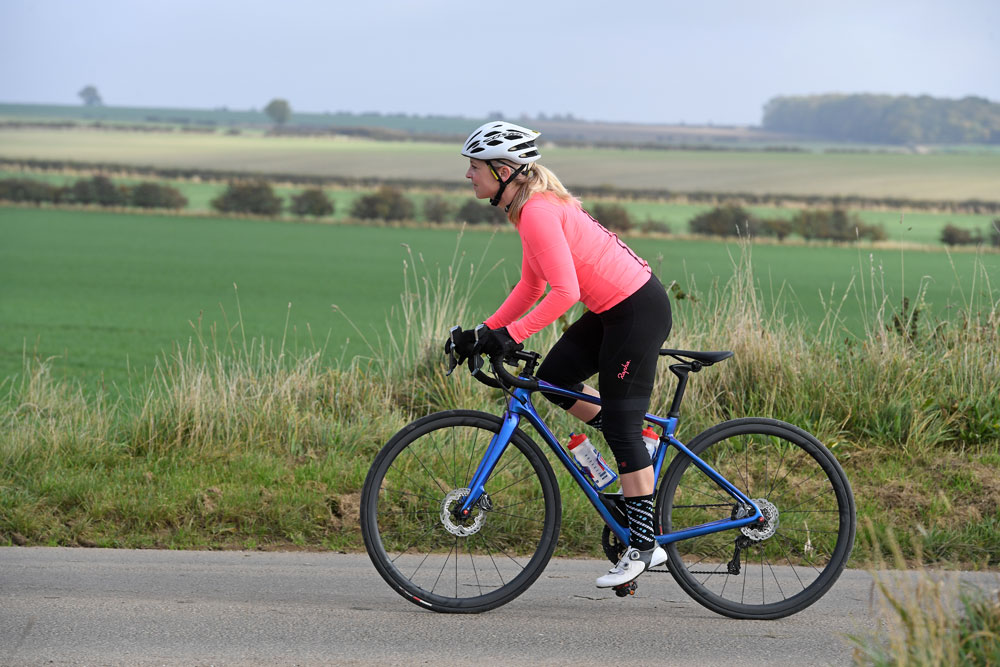
From the moment you start riding a mind, one of the first questions to float through everyone’s minds is to wonder how fast you’re going. The good news is that even the most inexpensive cycling computers will show your max, current and average speed as you’re rolling along.
But once you have that information, those questions begin to multiply - how do I compare to other riders? How much faster can I go? In any case, keeping an eye on your average speed is a good gauge of your progress as a cyclist and improving your average speed on a set loop is a cycling goal for many.
Many of you were interested in the answer to the Ask a cycling coach question: 'What's the best workout for increasing your average speed on a 100-mile bike ride'.
Well, we've got lots more tips and tricks for instantly increasing your speed - as well as some guidance which requires a bit more practice and patience to enact. Whatever your starting speed, follow these tips to see your average increase.
What speed does the average road cyclist ride at?
This is a really hard question to answer - it depends where you live (is it hilly? windy?), and of course your base level fitness will have an impact. However, it's a question a lot of beginners ask.
To satisfy your curiosity, the answer is that according to Strava data, the average male cyclist rides at an average speed of 20.4 kph (12.7 mph), whilst the average female hits 17.7 kph (11 mph).
However, alongside differences in terrain and weather, these numbers also encompass the full spectrum of rides uploaded to Strava. That includes (typically) slower urban and gravel riding to the much faster speeds seen in group rides on Zwift and other indoor training apps for cycling.
Get The Leadout Newsletter
The latest race content, interviews, features, reviews and expert buying guides, direct to your inbox!
If you want a more granular look at the speeds people are riding, checking out Strava’s segment leaderboards is a good place to start. Plus it gives you the option to filter by age, weight and gender - as well as other options - making it easier to find a yardstick that’s relevant to you.
Still, no matter what speeds other people are riding at, there is always that warm satisfaction of improving on your own times. Here’s our top tips for improving your average speed.
How to increase your average speed on a bike ride
1. Bend and tuck elbows
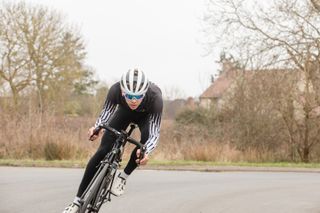
The biggest thing slowing you down when you cycle is wind resistance. Many of these tips concern ways to reduce your frontal area and your drag so you slice more easily through the wind.
The simplest of them all is to slightly lower your body position on the bike. Instead of sitting up straight in the saddle and catching a lot of wind, try lowering your body closer to the bars by bending and tucking in your elbows. You’ll immediately feel a difference.
2. Pump up (or deflate) your tires

Correctly inflated tires are key to riding at your maximum potential speed. You should check your road bike tire pressure before every ride as changes in temperature and slight seeping of air can mean that they go soft without necessarily being punctured.
If your tires are too soft, the rolling resistance you encounter will be proportionally higher, sapping away your speed. Insufficiently inflated tires are also more susceptible to punctures - so there’s an additional reason to keep your pressures topped up.
But on the other hand, over-inflating your tires will also slow you down. If you make your tires completely rock-solid with air, they will no longer be able to conform to the bumps and imperfection of the road surface. It’s more efficient - and more comfortable - if your tires soak up this chatter themselves, rather than transmitting it up the frame and juddering both you and your bike.
There are many factors which determine what the optimal pressure for your setup will be. The width of the tire and the combined weight of you and your bike are two major ones. But the casing of your tires and the internal width of your rims also plays a part. To take out some of the guesswork, the component manufacturer SRAM has developed a handy online tire pressure calculator which will give you recommendations for your setup.
Of the best bike pumps, these can be split into two separate categories: floor pumps and mini pumps. Floor pumps have more accurate gauges and are easier to pump, so invest in one of these for quick and easy adjustments at home. A mini-pump is best kept only for emergencies out on the road.
3. Brake less

How’s this for an obvious one? Try braking less. Braking slows you down and requires you to pedal harder to accelerate back up to speed. Unnecessary braking is a waste of energy and momentum. So how do you improve? Firstly try to eliminate ‘comfort’ braking. This occurs when you are rolling along a fast road or downhill and you start to go a little bit quicker than you are used to.
Braking to get your speed down to a level you feel comfortable with is fine - but take a good look around first: if the road surface is good, clear of obstructions and relatively straight, there is no reason to slow down so let the bike roll and enjoy some free speed. The next place to improve confidence is during cornering. Braking later will help you hold your speed for longer. Remember to always brake in a straight line and get to a comfortable cornering speed before you start to turn.
4. Ride on the drops
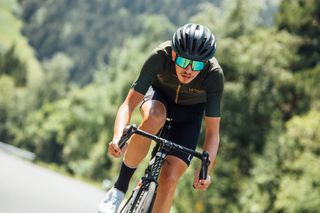
If you are riding a drop-handlebar’d bike, how often do you actually use the drops? Chances are not that much. But getting down lower improves your bike handling, reduces your aerodynamic drag and will help you corner and descend with confidence. Riding on the drops lowers wind resistance by 20 per cent compared with riding on the tops.
There are two main causes which typically stop people from riding in the drops. The first is not being able to reach the brakes and the second is simply not feeling comfortable. Both of these issues can be addressed with a proper bike set-up.
If your bike fits you properly, you should be able to ride in the drop position for large parts of your ride. If you’re struggling to hold an aero position comfortably, you may also need to do some stretching as tight hamstrings and an inflexible lower back makes it harder. How about also trying this 10 minute daily routine to boost your flexibility and endurance.
5. Track stand
You may have spotted other commuters and bike couriers balancing, seemingly effortlessly, at traffic lights and thought that they were just showing off their superhuman bike skills. However, there’s much more to this little maneuver than showboating. While you’re still fumbling for your pedal, they’ll have put in three or four good strokes and already be up to speed and away. Track standing does require practice and this is not best done in front of a van driver during the Monday morning rush hour. When you stop for food or are hanging around waiting for your mates, start playing around with the technique.
To learn this, find a slight incline - the gradient helps find your balance point. If you normally ride clipped in, you can switch to trainers for confidence. Start by riding really slowly in tight circles. This will help you get a sense of how to balance your weight. Go as slow and tight as you can and try to use smooth movements.
When you are comfortable, come to a slow stop with your wheel pointing uphill. Keep your head up rather than looking at the front hub. Pick a spot and focus your eyes on that spot. Now, with your lead foot — the one that is forward (feet at three and nine o’clock), turn the wheel (about 45°) into the incline keeping enough pressure on your lead foot to keep your balance, but not enough to move up the incline.
Using the same ratcheting technique you employed to ride in circles, relax the pressure slightly so the wheel will roll back, apply it again and it will roll forward. With that slight rocking back and forth motion, you can maintain balance. Initially, you can always cheat by grabbing hold of a lamp post or railing when you are stopped. Just remember to start pedalling slightly before you let go so you have momentum, otherwise you might just plop over sideways!
6. Ride out into a headwind and home in a tailwind
Unless you are a sailor as well as a cyclist, you might not give wind direction a thought on a daily basis - but the wind can be both your friend and your enemy. A headwind can make riding feel like a struggle, making you feel slow regardless of the effort you put in. A tailwind makes you feel like a superhero as you can easily spin along at top speed.
Make use of the wind by planning your route so the outward part when you are freshest is into the headwind and the homeward leg when you may be feeling tired has a tailwind.
7. Cut excess fat
If you want to go a bit faster, losing some weight will make a big difference, as you’ll be able to go faster uphill for the same effort and accelerations will be easier. Additionally, shedding some bulk will help you punch a smaller hole in the air and reduce the drag you cause when cycling on the flat.
If you are carrying a bit of excess weight you’d like to lose, make sure to do this steadily and over a sufficient length of time. It’s very important you still take on enough nutrition to fuel your rides and to ensure effective recovery - but it is possible to do this while still losing weight. You can find our in-depth guide on how to lose weight through cycling without losing strength over here.
But if you are already lean, you’ll be better off focusing on building strength rather than trying to lose any more weight. You can find out more about RED-S (Relative Energy Deficiency in Sport) and the dangers of systemically underfuelling over here.
8. Add intervals into your training
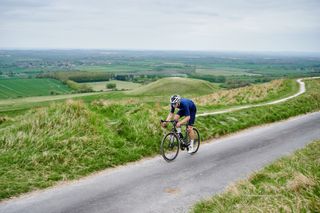
The fastest way to increase your average speed is to train at speeds above it. Obviously, you can’t just go out and ride your normal route faster than usual - you’d rapidly start to hurt and run out of energy. Instead, coaches recommend interval training as a key constituent of their cycling training plans. This means you will be cycling for short bursts at speeds above your usual average pace, before then slowing down to recover for a period - and then going fast again.
You can try this technique during any ride, it doesn’t have to be saved for strictly set ‘training sessions’. ‘Fartlek training’, as it’s also known, was designed by a Swedish coach and basically means ‘playing with speed’. You might choose to ride as fast as you can to the end of the road and then recover until you pass five lamp posts before going fast again.
Use any markers you like from your environment: parked cars, road signs, gateways. Pick your target and pedal hard till you reach it, then ease off. Make sure the road is safe and that no matter how hard you are trying, keep your head up to spot any hazards - or try completing session cycling indoors where you can concentrate on the efforts alone.
If you want a more structured session try this one. If we assume you usually average 23 kph / 14 mph on the flat, ride for 15-20 minutes to warm up before finding a reasonably flat stretch of road. When you get there, cycle for two minutes at 26 kph / 16mph. Choose a harder gear, and maintain the same cadence rather than trying to pedal faster.
After pedalling hard for two minutes, change back into your easier gear, slow down and take it easy for five minutes - but keep your legs pedalling, this helps the recovery process. Then repeat this whole ‘interval’ process another three or four times. If it feels too easy, next time aim to go three, four or five kph / mph quicker during your interval than you would normally ride.
After a few trips out you will know what works for you. Your average speed for these rides might well be less than your ‘normal’ average speed. But this is not a problem at all, since that is not the challenge. The challenge is to slowly get you and your legs used to cycling at 26 kph / 16mph instead of 23 kph / 14 mph - which you will later be able to do for a whole ride.
9. Ride with others
You might consider this cheating, but riding with other people will increase your average speed in several ways. Firstly if you take it in turns to ride in front and share the work of cutting through the wind you will travel faster as a group than on your own.
Secondly, riding with others on a group ride will also encourage you to lift your effort level. Trying to keep up with someone that bit faster than will provide an impetus that will help to increase your average speed - both on that particular ride and on subsequent ones, as your fitness level starts to increase.
Another option is to enter a sportive or gran-Fondo. Way-marking, feed stations, mechanical support and the motivation of others around you all serve to help you ride faster than on your usual weekend loop.
10. Aero bike and/or wheels

If you really want to go all out, you can buy speed. Aerodynamic tubing on the best aero bikes, as well as the aero-profile spokes and deep-section rims found on the best road bike wheels help reduce your drag, enabling you to go faster. However, the human body causes about 70 per cent of the total drag (the bicycle and wheels about 30 per cent), so improvements to your riding position will be the most important factor.
But before you start shelling out money remember that these improvements will be very small compared with the speed gains you could get for free - such as working on your position, improving your flexibility and servicing your bike. If you want to spend some money in your bid for speed, then your best bet is to get properly bike-fitted (you can find out more about what to expect at a bike fit and recommended fitters over here) and make sure you’re wearing figure-hugging cycling kit.
11. Wear tighter clothing

There are two reasons to wear tight-fitting cycling clothes. One: the material is designed to wick away heat and sweat, keeping you cool and dry in hot weather riding conditions, which makes it far less tiring to ride. And two: loose baggy clothing adds a lot of drag, which will only serve to slow you down.
Look for slim-fitting garments and do away with any flapping tops. Do zips up if you want to go faster. The really serious even cover their shoes with Lycra booties. One of the best aero helmets may save a few watts too.
Does your average speed really matter?
It’s natural to wonder how your average speed compares to other riders. Scanning the forums there are plenty of people wondering if their average speed is enough to allow them to ride with a club or enter a race.
It’s a tough question to answer as so much can influence your average speed on any ride. While keeping a mental note of your average speed from rides can help you see how your fitness progress is shaping up, it’s dangerous to become a slave to it.
Many things influence your average speed on a ride; wind direction and strength, terrain, road surface, humidity and heat and traffic volume. If you become too obsessed with minor changes you can feel demoralized on the slow days, even though a slower speed might not represent your effort or fitness levels but be due to changes in conditions.
Chasing ever faster averages on a daily basis will leave you strung out and tired. Plus it might encourage you to take more risks as the speed becomes more important than the ride. Other than as a way of monitoring your progress, average speed doesn’t matter that much. We’d recommend that you pick a safe, flattish route that you know reasonably well and ride it hard once a month with a view to watching your average speed rise.

Thank you for reading 20 articles this month* Join now for unlimited access
Enjoy your first month for just £1 / $1 / €1
*Read 5 free articles per month without a subscription

Join now for unlimited access
Try first month for just £1 / $1 / €1
Hannah Reynolds interest in cycling began while studying for a degree in Sports Science at the University College Chichester and surrounded by elite level cyclists. She is now undertaking a PhD at Sheffield Hallam University investigating the use of e-bikes by older people.
A committed dabbler whose passion outweighed her talent Reynolds has competed across all disciplines of cycling bar BMX. In the very distant past she has been south-east road race champion, southern cyclo-cross champion and finished third in the European 24hr Solo mountain-bike champs in 2011. She was also the Fitness Editor of Cycling Weekly for 15 years.
Hannah Reynolds is author of several cycling books, France-en-Velo a guide to the ultimate 1000 mile cycle route from the Channel to Med; Britain's Best Bike Ride. LEJOG1000; A 1000 mile journey from Land's End to John o' Groats and 1001 Cycling Tips.
-
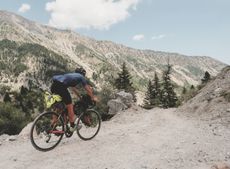 Nightmares, niceties and gnarl: 10 years of the Transcontinental Race
Nightmares, niceties and gnarl: 10 years of the Transcontinental RaceThe ultra-distance benchmark that pits riders against a 4,000km self-supported Europe-wide trek reaches double figures
By James Shrubsall Published
-
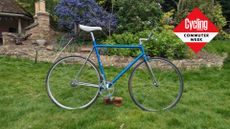 Why the best commute will always be aboard my old steel fixie
Why the best commute will always be aboard my old steel fixieCharming, simple, and always a great workout, this is the perfect town bike
By Joe Baker Published
-
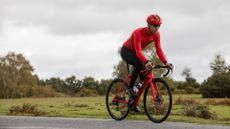 Cycling training plans: 10 week plans for beginners, intermediates and racers
Cycling training plans: 10 week plans for beginners, intermediates and racersGet into cycling, get fitter, or ride faster with our cycling training plans
By Anna Marie Abram Published
-
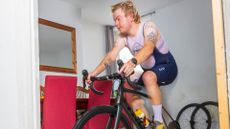 Kickstart your riding with our cycling training plan for beginners
Kickstart your riding with our cycling training plan for beginnersReady to get fit and healthy through cycling? Then this is the plan for you! In partnership with Alzheimer's Research UK
By Anna Marie Abram Published
-
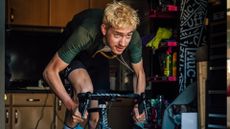 All the essentials to get started cycling indoors (on a budget – or not)
All the essentials to get started cycling indoors (on a budget – or not)Indoor cycling is a fast, efficient way to get fit, here is all you need to get started and beyond
By Luke Friend Published
-
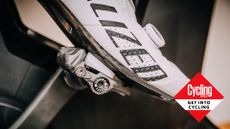 Should I be riding with pedals I can clip into? Here's our guide on how to cycle with 'clipless' pedals
Should I be riding with pedals I can clip into? Here's our guide on how to cycle with 'clipless' pedalsLearning to cycle clipped in is a rite of passage for any cyclist, these tips will help make the transition from flat pedals to clipless as seamless as possible
By Michelle Arthurs-Brennan Published
-
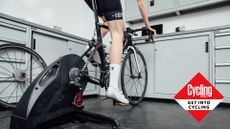 Suffering with clunky bike gears? Follow our simple guide to make your shifting smooth again
Suffering with clunky bike gears? Follow our simple guide to make your shifting smooth againFollow our step-by-step guide on how to adjust your bike gears
By Luke Friend Published
-
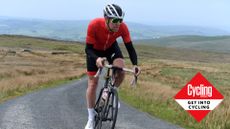 'Will cycling change my body shape?' – you asked Google and we’ve got the answer
'Will cycling change my body shape?' – you asked Google and we’ve got the answerNew to riding bikes and worried your new found pedal pushing habit will turn you into the incredible hulk? We've got the answers...
By Michelle Arthurs-Brennan Published
-
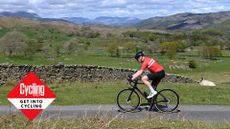 Six things I wish I'd known as a beginner cyclist
Six things I wish I'd known as a beginner cyclistEveryone's a beginner at some stage. Here are six things to bear in mind if you're looking at getting out on your bike
By Tom Thewlis Published
-
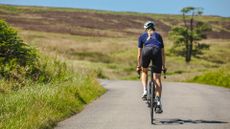 How to get from the couch to 30 miles: 8 tips for kickstarting your cycling
How to get from the couch to 30 miles: 8 tips for kickstarting your cyclingWant to experience life on two wheels, but don't know where to start? Here's our top tips for getting you rolling
By James Spragg Last updated